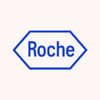
Comparative Evaluation of Safety and Immune Activity of New Immunotherapeutic Agents for HDM Allergic...
Mite AllergyRhinitis2 moreWhen administering clinical trial drugs to patients with house dust mite allergic rhinitis, safety/tolerance is comparatively evaluated as the primary outcome, and symptom improvement and immune activity of the disease are comparatively evaluated as secondary outcome.

Vitamin D Treatment Effect for Atopic Dermatitis in Children
Atopic DermatitisA double-blind study to evaluate the role of human microbiome and vitamin D in the development of atopic dermatitis.

Catheter Ablation Versus Anti-arrhythmic Drugs for Ventricular Tachycardia
Heart Disease Structural DisorderVentricular Tachycardia10 moreSudden cardiac death (SCD) due to recurrent ventricular tachycardia (VT) is an important clinical sequela in patients with structural heart disease. VT generally occurs as a result of electrical re-entry in the presence of arrhythmogenic substrate (scar). Scar tissue forms due to an ischemic cardiomyopathy (ICM) from prior coronary obstructive disease or a non-ischemic cardiomyopathy (NICM) from an inflammatory or genetic disease. AADs can reduce VT recurrence, but have significant limitations in treatment of VT. For example, amiodarone has high rates of side effects/toxicities and a finite effective usage before recurrence. ICDs prevent cardiac arrest and sudden death from VT, but do not stop VT occurring. Recurrent VT and ICD therapies decrease QOL, increase hospital visits, mortality, morbidity and risk of death. Improvement in techniques for mapping and ablation of VT have made CA an alternative. Currently, there is limited evidence to guide clinicians either toward AAD therapy or CA in patients with NICM. This data shows significant benefit of CA over medical therapy in terms of VT free survival, survival free of VT storm and VT burden. Observational studies suggest that CA is effective in eliminating VT in NICM patients who have failed AADs, resulting in reduction of VT burden and AAD use over long term follow up. Furthermore, there is limited data on the efficacy of CA in early ICM with VT, or advanced ICM with VT. RCT data is almost exclusively on patients with modest ICM with VT, and this is not representative of the real-world scenario of patients with structural heart disease presenting with VT. Therefore the primary objective is to determine in all patients with structural heart disease and spontaneous or inducible VT, if catheter ablation compared to standard medical therapy with anti-arrhythmic drugs results in a reduction of a composite endpoint of recurrent VT, VT storm and death at a median follow up of 18 months.

A Study to Evaluate the Pharmacodynamic, Efficacy and Safety of SHR-1703 in Asthma Patients With...
Asthma With Eosinophilic PhenotypeThe purpose of this study is to evaluate the Pharmacodynamic, Efficacy and Safety of SHR-1703 in Asthma Patients with Eosinophil Phenotype.

Phase I/II Study of Pacritinib, A JAK2/IRAK1/CSF1R Inhibitor, in Refractory Chronic Graft-Versus-Host...
Graft vs Host DiseaseBackground: Chronic graft-versus-host disease (cGVHD) is an immune system disorder that can occur in people who have had a stem cell transplant. cGVHD can affect multiple organs and increase risk of disability and death. New treatments are needed to treat cGVHD after stem cell transplant. Objective: To test a drug (pacritinib) in people with moderate or severe cGVHD that has not responded to previous treatment. Eligibility: People aged 18 years and older with moderate or severe cGVHD that has not responded to 2 or more lines of previous treatment. Design: Participants will be screened. They will have blood and urine tests. They will have tests of their heart and lung function. They may also have a CT scan. Some may have other specialized tests. Participants will take the study drug at home every day. Pacritinib is a capsule taken by mouth. The study doctor will determine the dosage and schedule. Participants will keep a medication diary. They will record the date and time of each drug dose and any missed doses. Participants will visit the clinic every 2 weeks for the first 4 months. Then they will visit the clinic once every 4 weeks. They will have blood and urine tests. During some visits, other screening tests will be repeated, and participants will fill out questionnaires about their quality of life. Photographs may be taken of skin rashes and joints affected by cGVHD. Participants will give saliva samples. Optional biopsies may be taken of the skin and mouth. Participants will take pacritinib for 6 to 12 months if no side effects develop. Follow-up visits will continue for up to 2 years. ...

A Study to Investigate the Radiological Onset of Action After Treatment Initiation With Subcutaneous...
Multiple SclerosisRelapsing-RemittingThe primary objective of this study is to evaluate the radiological efficacy of SC natalizumab over time through Week 24 in natalizumab-naïve participants, as measured by brain magnetic resonance imaging (MRI). The secondary objectives of this study are to evaluate additional lesion-related radiological efficacy measures over time, relapse-based clinical efficacy measures, disability improvement and worsening (EDSS), pharmacokinetic and pharmacodynamic parameters, the immunogenicity of repeated doses, and safety in treatment-naïve participants of SC natalizumab.

A Study Evaluating the Safety and Efficacy of Multiple Treatments in Participants With Multiple...
Multiple MyelomaCO43923 is a platform study that will evaluate the safety, efficacy, and pharmacokinetics (PK) of multiple treatment combinations, as monotherapy or in combination, in participants with multiple myeloma (MM). The study is designed with the flexibility to open new treatment substudies as new treatments become available. Information regarding the opened substudies are found below.

A Comparison of PT027 vs PT007 Used as Needed in Participants With Asthma
AsthmaThis is a US study comparing the efficacy and safety of BDA MDI [Budesonide/Albuterol Sulfate (BDA) metered dose inhaler (MDI)] with AS [Albuterol Sulfate] MDI, both are administered as needed for up to 12 months.

Evaluating Safety and Efficacy of ADX-914 in Patients With Moderate to Severe Atopic Dermatitis...
Atopic DermatitisThis is a phase IIa, randomized, double-blind, placebo-controlled, multi-center proof-of-concept (POC) study in subjects with moderate to severe Atopic Dermatitis.

The Investigate Efficacy and Safety Evaluation of Bortezomib in Patients With Relapsed/Refractory...
Relapsed/Refractory Immune Thrombocytopeniato investigate efficacy and safety evaluation of bortezomib in patients with relapsed/refractory immune thrombocytopenia
